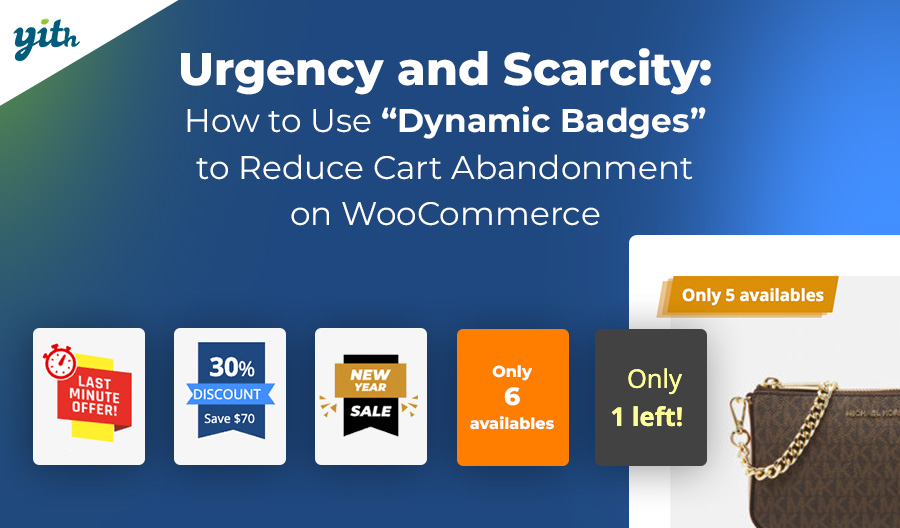There are all kinds of online stores out there, and each one has its own needs and goals. If we wanted to make a general distinction between types of eCommerce, we could divide them into B2C (Business to Consumer, i.e., retail) and B2B (Business to Business, i.e., wholesale).
This division makes it tough to find the right strategies and tools for your needs because they usually fall into one of two categories. This is especially true if your eCommerce business has a dual nature, offering products and services to both markets.
In this article, we’ll give you some tips for selling both retail and wholesale online. When we put this guide together, we used a combination of WordPress and WooCommerce for a few reasons: it’s free, widely used by similar stores, and offers incredible flexibility, letting you set up your store exactly how you want.
We’ll also suggest specific WooCommerce plugins to help you add advanced features, but this guide isn’t just a list of plugins. It’s a step-by-step guide where we’ll talk about the reasons behind certain choices and how to implement them.
All of this follows the “5 Pillars of a B2B Store,” which is often used as a framework for building a successful B2B eCommerce site.
Let’s do this!
Table of contents
- Why use WooCommerce for B2B? What to expect?
- The 5 Pillars of a Successful Wholesale Store (WooCommerce B2B & Wholesale Store)
- Pillar 1: User Roles and Access Control - Who Sees What?
- Pillar 2: Dynamic and Wholesale Pricing – The Heart of B2B
- Pillar 3: Product Catalog Visibility - Personalize the Browsing Experience
- Pillar 4: The B2B Purchasing Process - From Quote to Payment
- Pillar 5: Shipping, Payments, and Specific Taxes for B2B
- Bring It All Together in One B2B Shop
Why use WooCommerce for B2B? What to expect?
You might be wondering: why use WooCommerce? These days, there are so many options to choose from, and this choice is key to the success of your online store.
As mentioned before, WooCommerce has a lot of advantages, like:
- Savings: WordPress and WooCommerce are both open source tools that you can use for free. You’ll still have to pay hosting costs for your online store, but these tools usually save you quite a bit compared to other solutions that charge a monthly fee and a commission on sales.
- Flexibility: There are a lot of plugins to choose from, so you can customize your eCommerce site any way you like.
It’s important to keep in mind that WordPress and WooCommerce weren’t originally designed for B2B sales. They’re not the best solutions, but that shouldn’t stop you from using them.
WooCommerce’s modular approach lets you build a custom solution using the best tools for each specific need. This is unlike traditional B2B platforms that can be rigid and restrictive.
The only potential drawback to be aware of is the possible incompatibility between plugins created by different developers. That’s why we suggest using the YITH plugin suite. Its unified framework makes sure that all the tools work well together, even enhancing each other and adding shared features.
The 5 Pillars of a Successful Wholesale Store (WooCommerce B2B & Wholesale Store)
As we mentioned earlier, there are five key elements that contribute to a thriving B2B store. Let’s quickly go over them, since they’ll be the backbone of this article:
- Pillar 1: User Role Management and Access Control – With a B2B store, it’s key to give each company that buys from your portal a personalized experience, which is different from a traditional store. So, some parts of the site can only be accessed by certain users, and the prices change based on the customer’s type. This is especially important when we’re talking about a portal that wants to sell products to both individuals and businesses.
- Pillar 2: Dynamic and Wholesale Pricing – The price of a product can change a lot based on how many items you buy. Whether you’re selling one item, 500 of them, or 5,000, the unit cost changes. Ideally, the price dynamically changes without having to go through quotes.
- Pillar 3: Product Catalog and Visibility – Many B2B stores want to create a product catalog that can’t be purchased directly (requiring a quote instead) because of the multiple customizations and specific requests of each customer. But, if you still want to show these products to help potential customers make a decision and for SEO reasons, we’ll figure out how to do that too.
- Pillar 4: The B2B Order Process – While it’s better to buy directly, sometimes you’ve got to ask for a quote. We’ll review how to make this option available.
- Pillar 5: Shipping, Payments, and Taxes Specific to B2B – Taxes, shipping, and payment methods vary depending on the type of customer. So, we’ll check out how to set up a system that automatically applies these differences.
Pillar 1: User Roles and Access Control – Who Sees What?
Let’s start with the first pillar: managing user roles within your online store.
If you’re thinking of creating an online store that sells to both individuals and wholesale customers, you’ll need to create two very different shopping experiences within it, with views and prices that change based on the user’s role.
The same is true for many B2B stores, since businesses can also fall into different categories and require different approaches.
To do this, you need to resolve two issues:
- Creating new roles and customizing them.
- Showing different prices and features based on the user’s role.
You can solve both of these issues with two simple WooCommerce plugins. Let’s take a look!
Create an intuitive registration process for B2B
To personalize the experience based on user roles, you first need to learn how to add new ones and edit existing ones. This way, you won’t be limited by the standard WooCommerce roles.
Many plugins on the market allow you to do this, but we recommend “Members” because of its ease of use.
Once the plugin is installed and activated, you can create and edit roles as you wish:
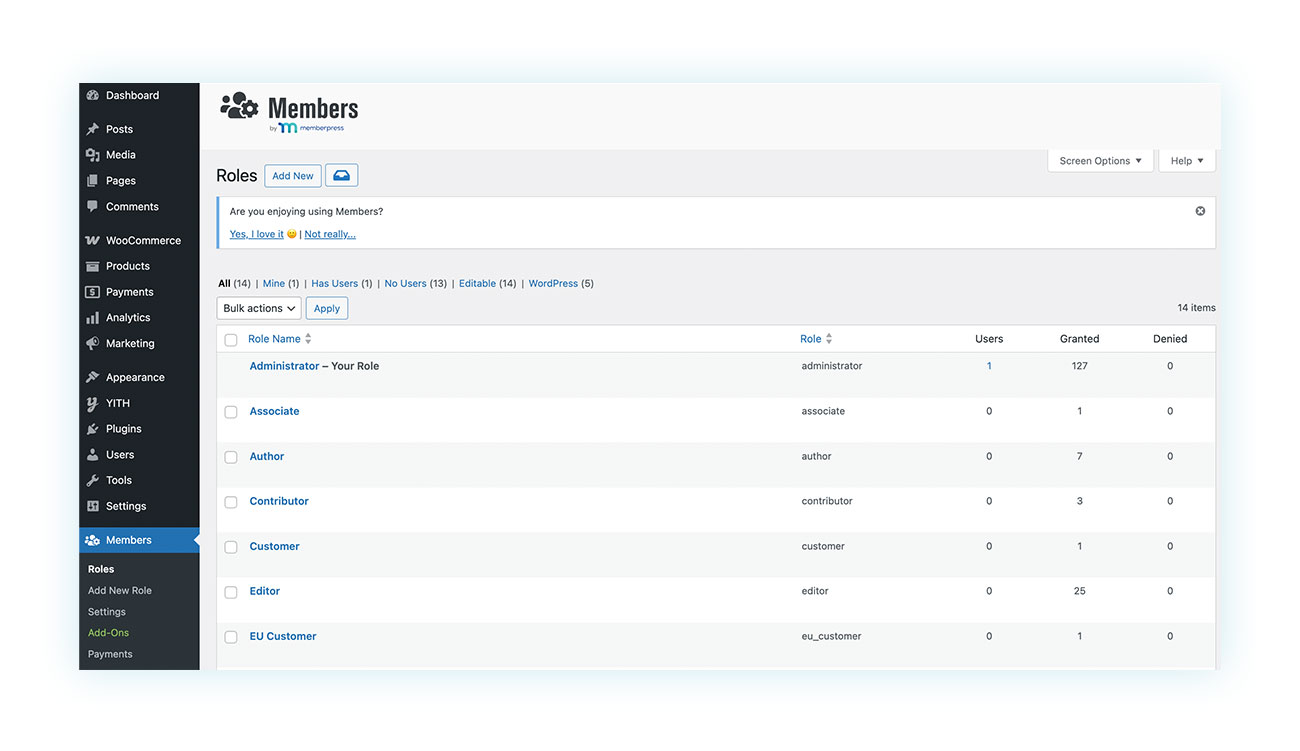
Once you’ve created those roles, you’ll need to tweak the site registration form to include the role the user wants. You can choose from a list of plugins online, or you can use custom code to add to the site, but we don’t recommend that for people who aren’t as experienced.
Once you’ve done that, you can move on to creating pricing and display rules based on user role.
Create wholesale prices for user roles on your eCommerce site
Now that you’ve created new user roles, it’s time to change prices and display settings. We’ll use a WooCommerce plugin called YITH WooCommerce Role Based Prices to add this functionality.
Once you install and activate the plugin, you can create as many pricing rules as you want.
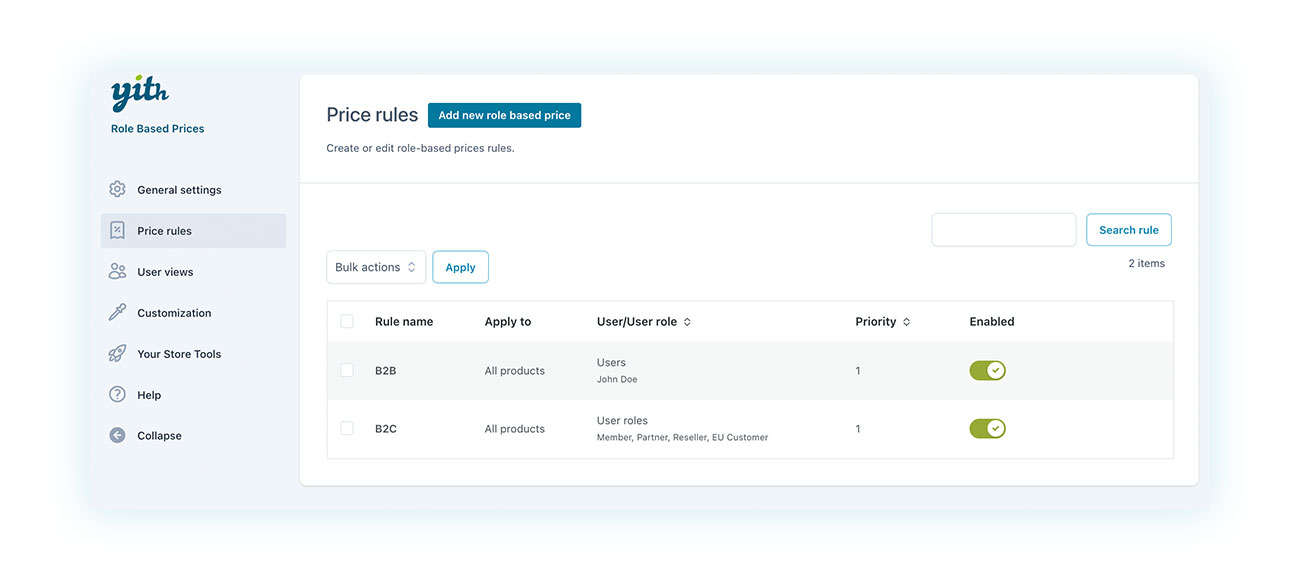
You can decide which products to apply these rules to, which roles (or specific users) they apply to, and how the price of the products will be displayed to these customers. As you can see in the image below, we’ve decided to give “Reseller” roles a 10% discount on everything in the online store:
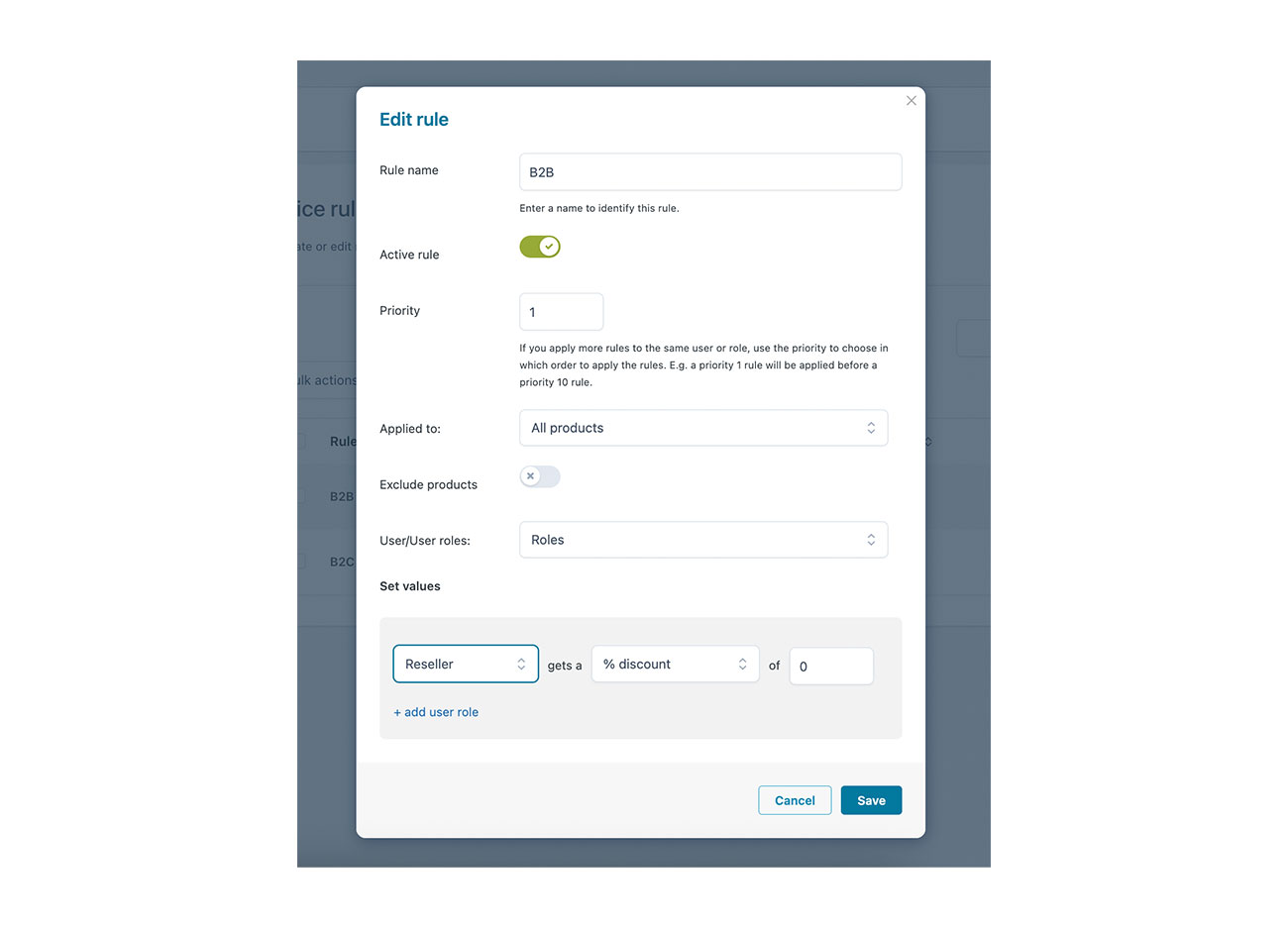
You can make similar but different rules based on your needs. You can also decide if and when to hide certain prices or buttons from specific roles:
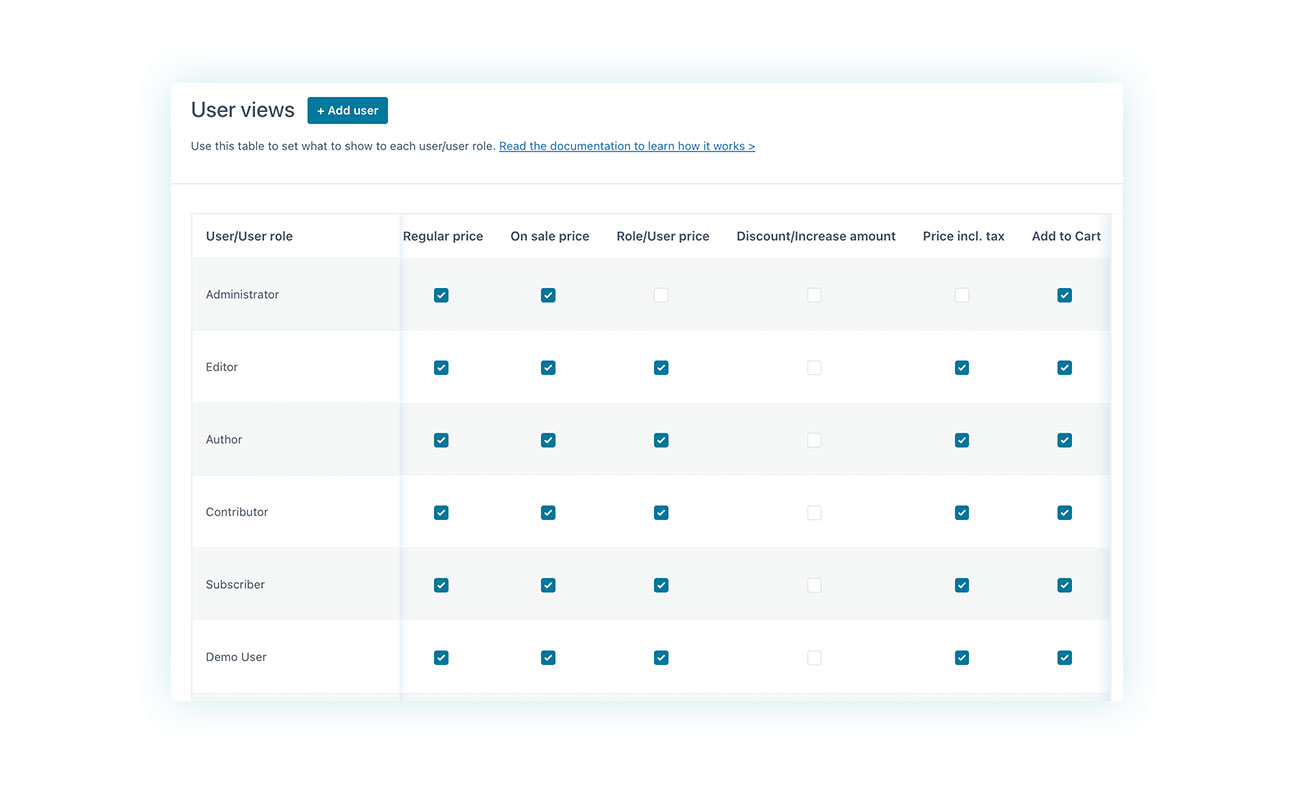
Pillar 2: Dynamic and Wholesale Pricing – The Heart of B2B
Alright, we’ve gone over how to show different prices based on the user’s role, but there’s another extremely useful feature for any wholesale business: dynamic pricing based on product quantity.
When you’re selling a product in large quantities, the unit cost is usually a lot lower than what you’d see in retail sales. You can get this done with quotes (sometimes you’ve really got to have them), but in a lot of situations, you can automate the whole process using the YITH WooCommerce Dynamic Pricing and Discounts plugin.
Let’s take a look!
Quantity and tiered pricing
The plugin lets you set up different types of discounts such as BOGO, 3×2, Black Friday, Free Shipping, and so on. For the purposes of this article, we’ll look at a simple quantity discount and how you can set it up with just a few clicks.
Once you install and activate the WooCommerce plugin, you’ll see a list of pricing rules in its control panel, where all the rules you create will show up. When you add a rule, you can choose from a few different templates. We’ll use “Quantity Discount” in our case:
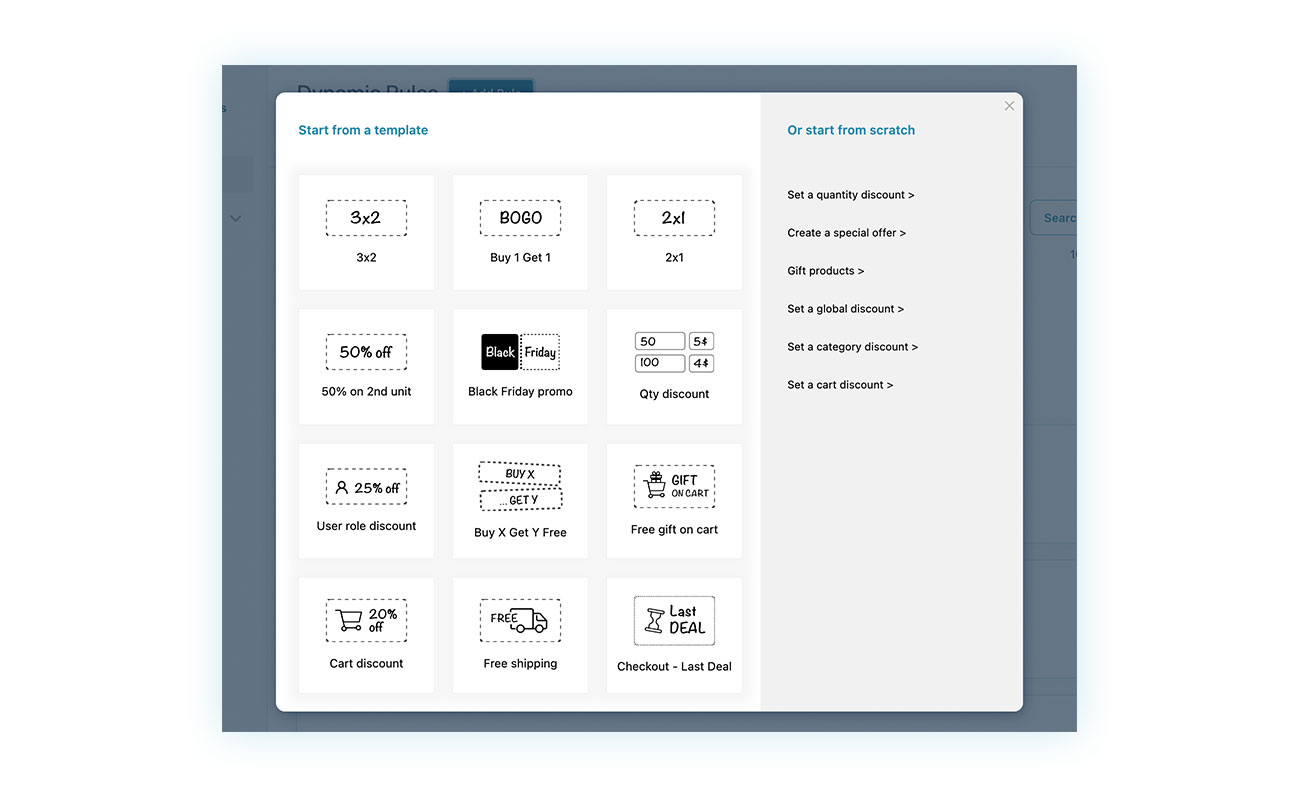
Then you can adjust the rule’s settings to fit your needs. We’re particularly interested in two aspects.
First, there’s the quantity/price table, where we’ll put in the number of items that get the percentage discount:
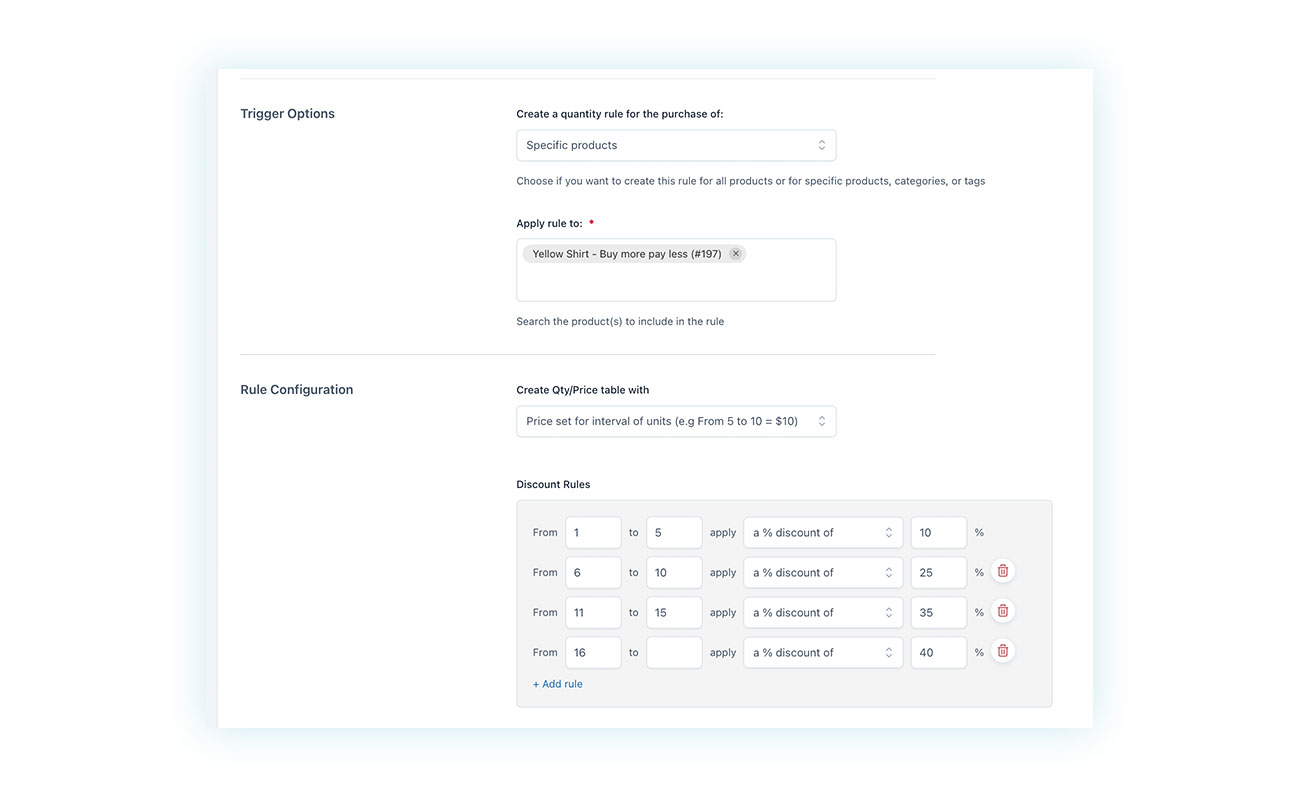
As you can see in the example, the minimum quantity required for the discount is 1-5 products, and a 25% discount is automatically applied for 6 to 10 products. A 35% discount is applied for 11 to 15 products, and a 40% discount for 16+ products.
Secondly, you can choose whether to apply this discount to certain user roles by scrolling down the creation page:
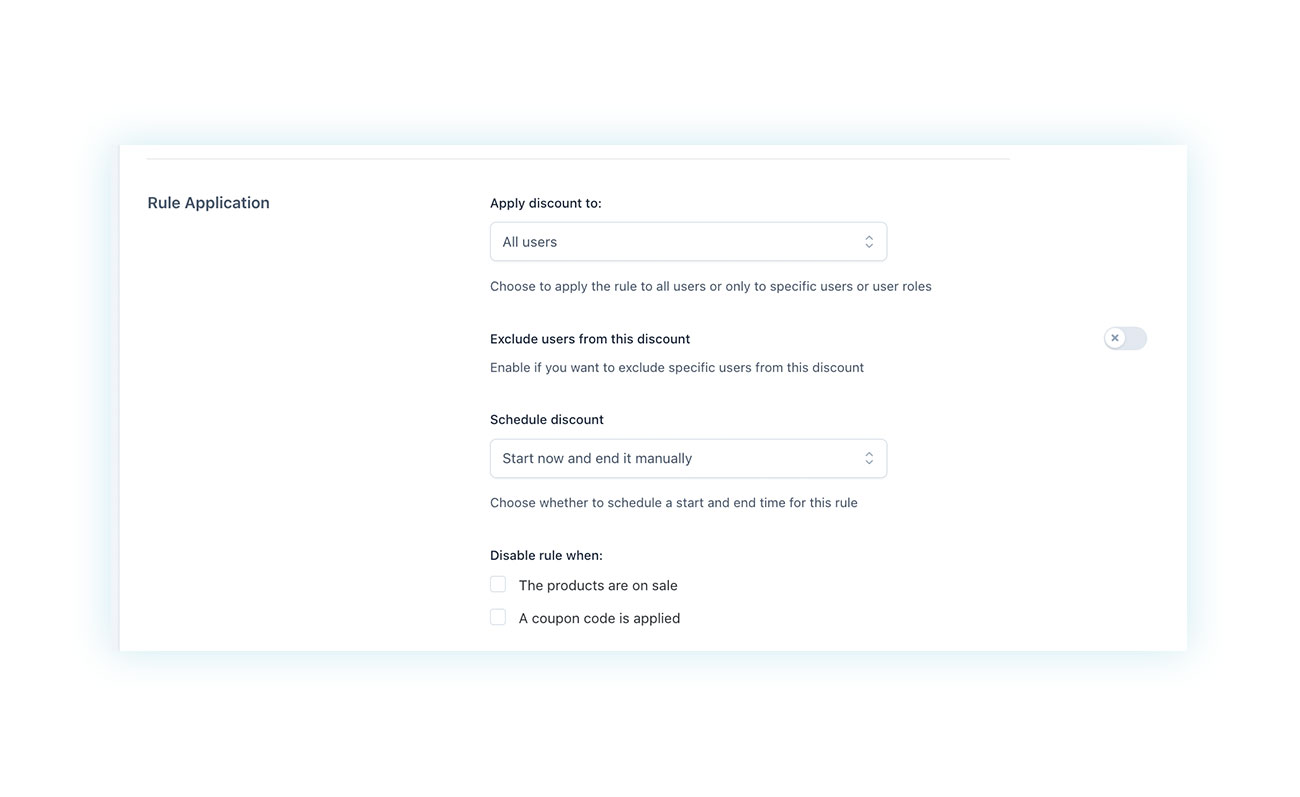
Here’s what the quantity/price table will look like on the product page:
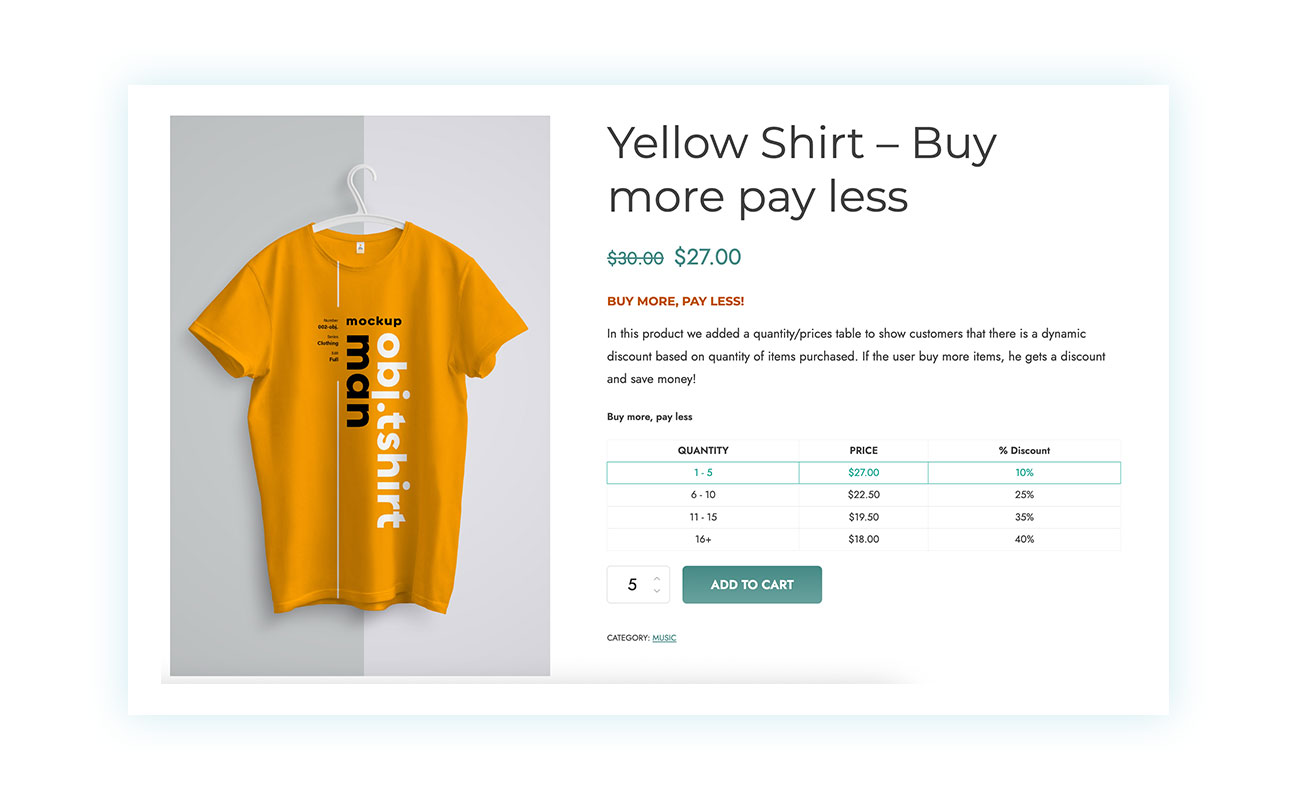
Pillar 3: Product Catalog Visibility – Personalize the Browsing Experience
A common requirement for a B2B store is to hide prices and/or the “Add to Cart” button for certain roles or times.
For example, you might want to limit the purchase or consultation of the price list to registered users only, or you might want to disable the option to add to cart during a period of closure without damaging your portal from a SEO perspective.
Once again, to do this, we’ll use a dedicated WooCommerce plugin, YITH WooCommerce Catalog Mode.
Create a “Catalog Mode” for guests
Once you install and activate the plugin, you’ll see its general settings in the control panel:
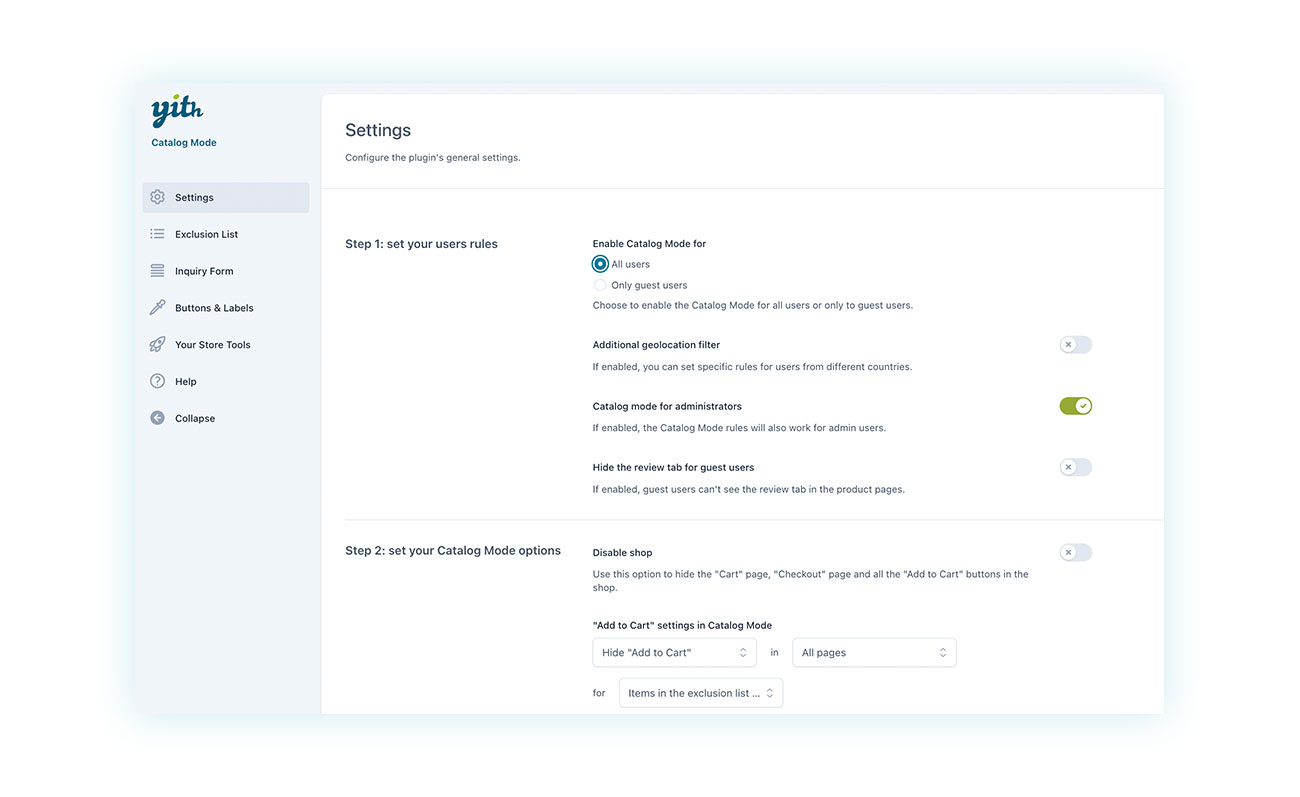
Here you can find the feature you need to create a catalog for guest users to browse. As you can see, you can decide whether to activate catalog mode for all users or only for guests.
The first option is great if your catalog always requires a quote request or if you’re closed and don’t want to lose SEO benefits.
Once you’ve decided which users to limit the plugin’s functions to, scroll down to check out some extra features:
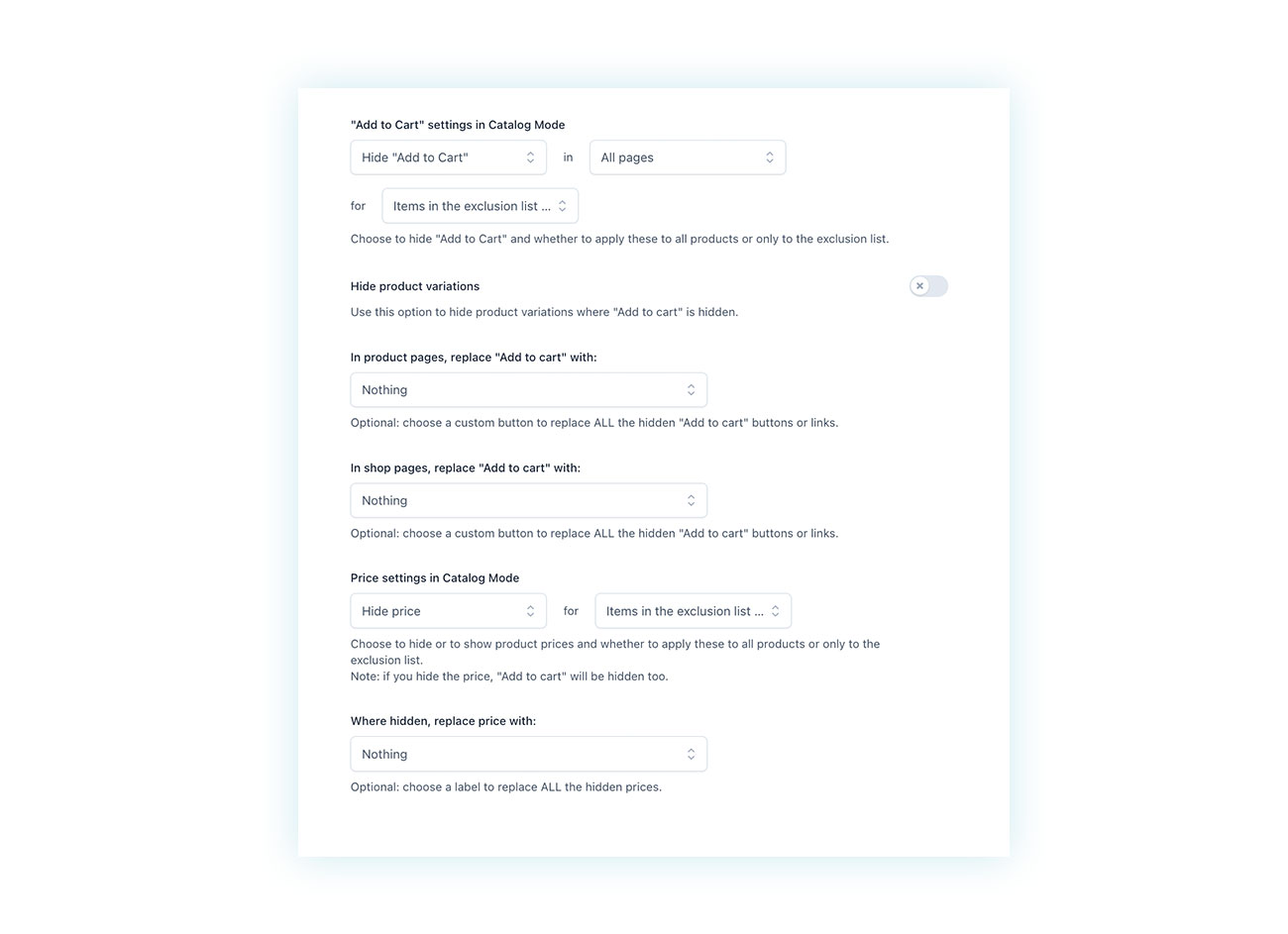
When you’re making product lists, you can choose which items to activate the feature for, and then decide what to hide. You can choose to hide it between the “Add to cart” button and the product cost, or both.
Here’s what you’ll see for the items you’ve activated catalog mode for:
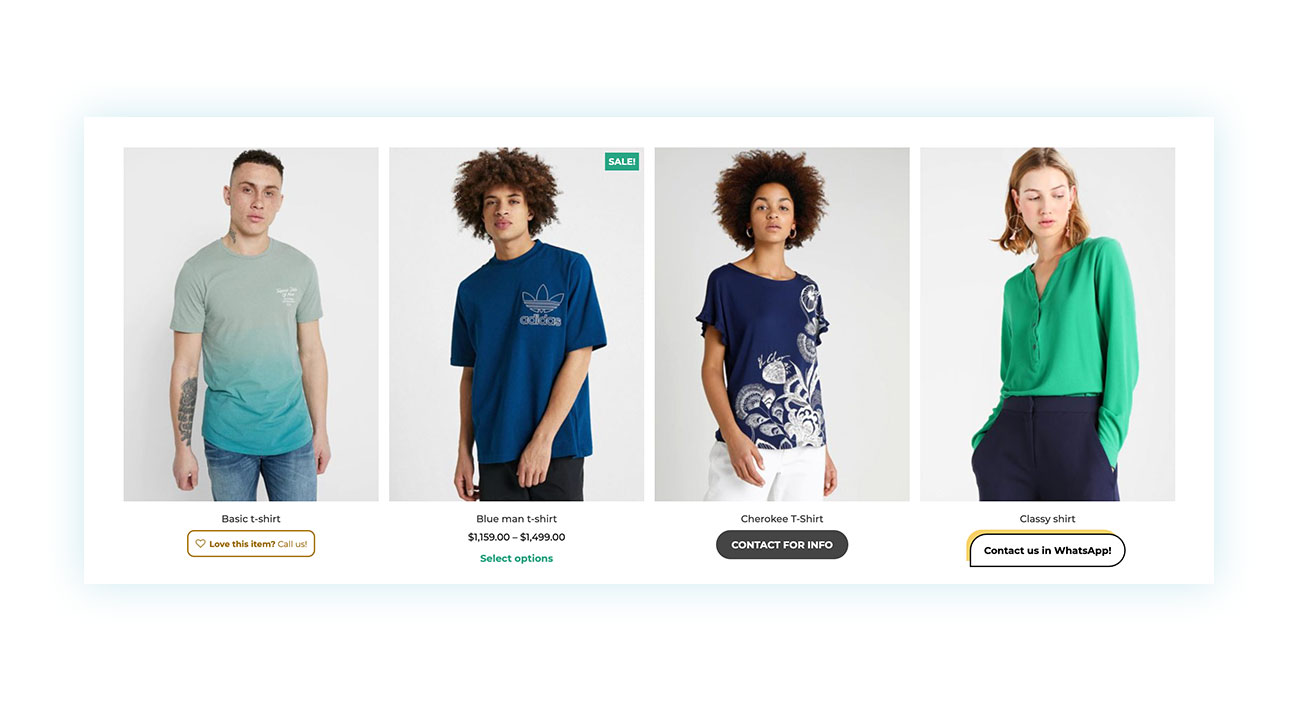
Pillar 4: The B2B Purchasing Process – From Quote to Payment
In a B2B market, the product or service requested isn’t usually standardized across all customers. It often needs customization in terms of quantity, configuration, technical integration, after-sales support, and more.
That’s why you might need a fast and automated quotation system to save your customers from having to email you and manually enter all the products, their features, and quantities.
Let’s add this feature to your online store using the YITH WooCommerce Request a Quote plugin.
Replace “Add to cart” with “Request a quote”
Changing the purchase process by replacing checkout with a quote is very simple: once you have installed and activated the plugin, all you have to do is go to its options:
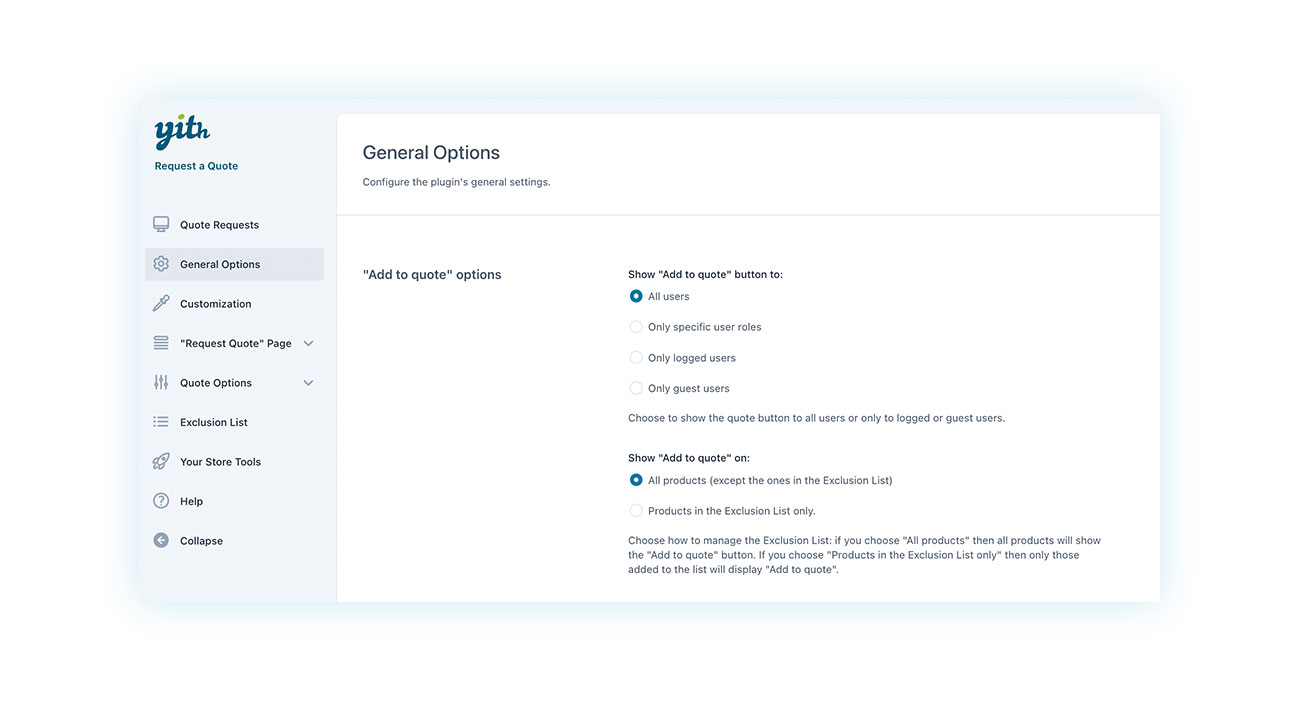
Here, you can choose which products and users will see the “add to quote” button.
Once you’ve set it up the way you want, here’s how your customers will see the products:
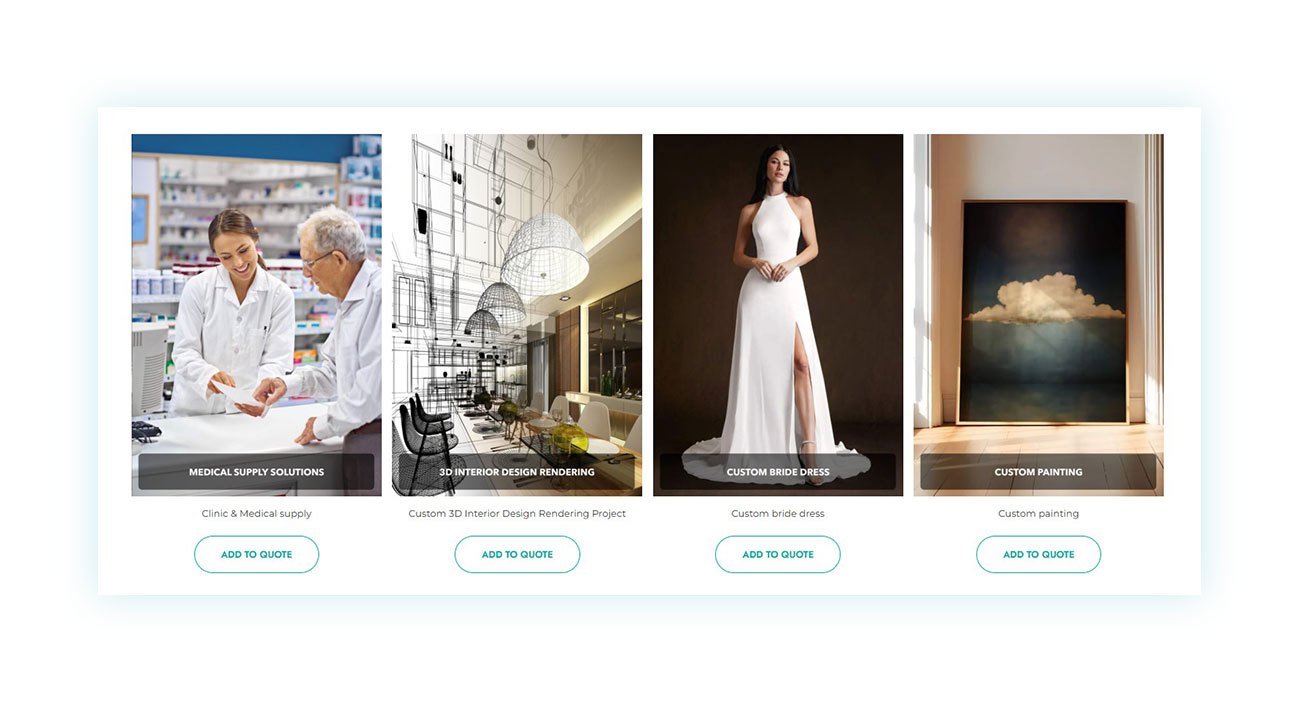
Then, customers can add products to their quote request and send it:
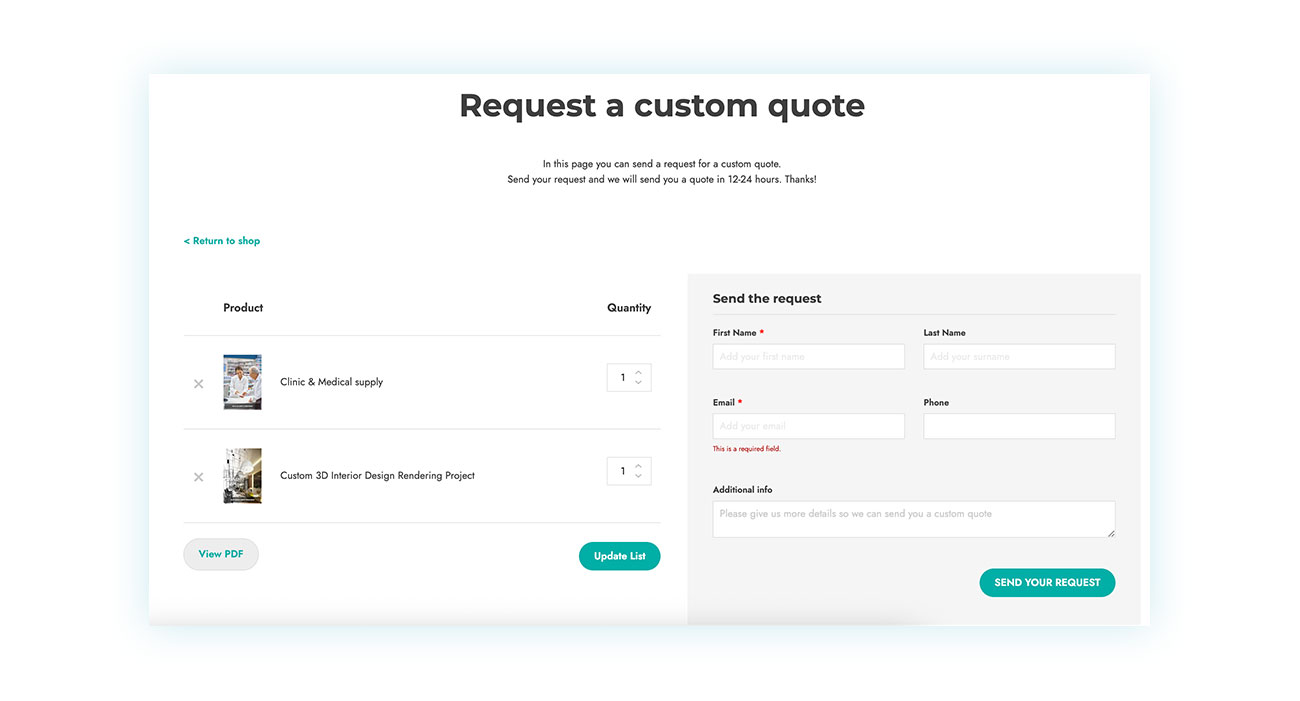
Pillar 5: Shipping, Payments, and Specific Taxes for B2B
Finally, remember that B2C and B2B customers have different needs when it comes to shipping methods, payment methods, tax exemptions, and more.
With YITH Dynamic Pricing and Discount, you can offer free shipping, remove VAT for wholesale buyers with YITH WooCommerce EU VAT, OSS & IOSS, offer discounts or additional costs based on specific payment methods with YITH Dynamic Pricing for Payment Method for WooCommerce, and much more!
The YITH plugin suite lets you customize your service however you like.
Bring It All Together in One B2B Shop
In conclusion, creating a successful WooCommerce B2B store means knowing how to balance different needs, ensuring flexibility and professionalism at the same time.
We’ve seen how the five pillars form the basis for building a solid and scalable eCommerce platform, capable of satisfying both private and business customers.
The YITH suite is a valuable resource, offering plugins that are designed to integrate seamlessly with each other. This avoids compatibility issues and adds advanced features. While we have not listed all the plugins in this article to save you time, you will discover several ideal solutions for a B2B store.
For those of you who manage a big product catalog, you’ll find YITH WooCommerce Bulk Product Editing to be a particularly useful tool. It’s a plugin that lets you edit prices, descriptions, categories, and a lot of other things, saving you time and minimizing errors.
With the right tools, WooCommerce becomes a complete platform for any B2B sales strategy.


